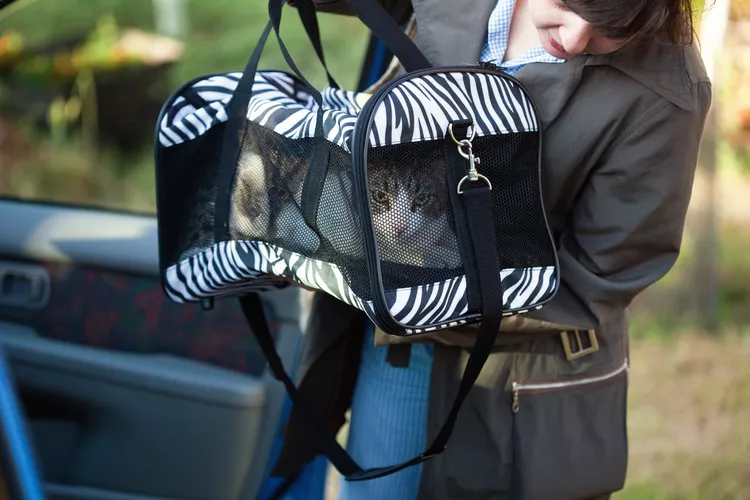How to Take a Car Trip With Your Cat

It's no secret that most cats hate car rides. During their lives, most cats only take occasional car trips. Car rides are often just to the veterinarian, leaving the cat with a negative impression of the car. Plus, people don't tend to take their cats on car rides very often, so they may never get used to the feeling of it.
If short trips are stressful for your cat, then long trips will probably be worse. If you are planning a long car trip with your cat, you may feel overwhelmed and worried, especially if you know your cat gets stressed out in the car. While you may never be able to get your cat to love car rides, you might be able to get him used to them enough to reduce his stress.
How to Get Your Cat Used to the Car
Chances are your cat associates car rides with vet visits. Most cats get very stressed at the vet, so this association can make car rides dreadful for everyone. Don't let this keep you from taking your cat to the vet for annual or biannual check-ups. Instead, start practicing the routine of a car until your cat starts to relax. This process can eventually reduce the stress associated with car trips.
First, begin leaving your cat carrier out with the door open so your cat can explore it. Put a soft bed or blanket inside along with a favorite toy and/or some extra tasty treats. Don't close your cat inside yet, just let him get used to it. Offer additional treats if he gets to the point where he is willing to remain in the carrier for a few minutes. If your cat is worried about the carrier, consider spraying the inside with a feline pheromone like Feliway to promote a sense of calm. However, do not directly spray your cat with pheromones. You can also try putting some catnip inside the carrier if this is something your cat enjoys.
Next, practice closing your cat in the carrier as if you are about to go for a car ride. Pick up the carrier and walk around with it. Afterward, let your cat out and offer valuable treats. Increase the length of time you walk around with your cat in the carrier. Once your cat starts to relax, try bringing the carrier out to the car, but don't go anywhere. Reward them with another high-value treat.
Then, add small trips to nowhere. Take a ride around the house, then bring your cat back home and let him out of the carrier. Once again, offer plenty of yummy treats.
Gradually increase the length of car trips without using your cat too far. If your cat is vocalizing loudly or panting, then the trips became too long too quickly. Slow down the process and see if your cat adjusts.
Preparing for a Long Trip
If you plan to take a longer trip, perhaps a few hours or more, then it's best to get your cat ready in advance.
Before the actual trip, be sure to get some things together. Make sure your cat is wearing an easy release collar or harness with identification. A microchip is also important in case your cat gets loose or lost and the collar or harness falls off. Make a list of emergency vets along the way in case your cat becomes ill.
The night before travel, put your cat in a small room with the carrier, a litter box, food, and water. This will make it easier to get your cat in the carrier the next day. Plus, it can help your cat adjust to a smaller space.
If the trip is more than two or three hours long, then your cat will need a break. Bring a litter pan, food, and water along with you on the trip. Take a break every two or three hours so your cat can relax, eat and drink, and use the litter box.
What to Do If Your Cat Won't Get Used to the Car
Some cats will never be able to calm down for car rides, despite your best efforts. These cats may benefit from calming supplements and/or medications. Talk to your vet about the best options for your cat.
Nutritional supplements like Solliquin can help your cat relax without the use of pharmaceutical medications. Test this out in advance before you venture out for a long trip.
If supplements are ineffective, then it might be time to try a stronger medication. Sedation may be the best option for the most anxious cats.
When You Arrive at your Destination
Whether you are moving to a new home or taking your cat on vacation, be aware that your cat needs time to adjust to his new environment. Gradually introduce your cat to his new space until he feels comfortable. Be patient as this can take time.